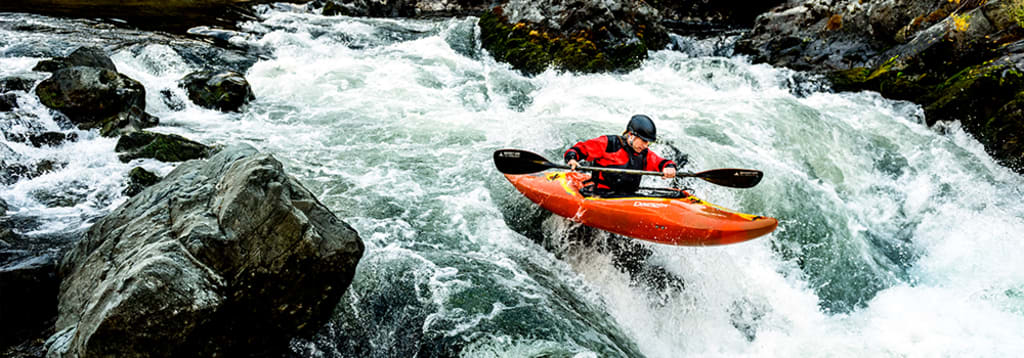
If you imagine kayaking as being trapped in a tiny boat hurling towards edgy rocks on the crashing riptides of Mother Nature, you will almost certainly ascertain a confident mind to give this sport a go.
The beauty, however, is that whether you kayak on a small lake, river, canal, exposed ocean, or simply learn new skills in a guarded pool; there is a certain comfort in the mental discomfort of the activity.
Emotional Intelligence: Nurturing a Strong Mind
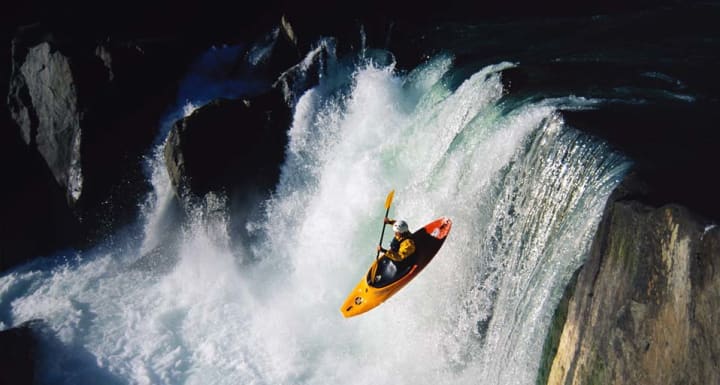
Emotional intelligence yields success
Salovey and Mayer’s (1997) psychological theory of emotional intelligence (EI) has been widely perceived to be a dominant concept in the holistic development of a person. To describe someone as being emotionally intelligent, you would expect someone to have the competence to identify and express their own emotions, understand these emotions, assimilate emotions in thought and regulate emotions in the self and in others. To put this into some context, remaining calm and working towards keeping control of the boat whilst it decides to take a ride of its own, would demonstrate some sense of EI.
The uncontrollable outdoors comes with its own prevailing challenges. Adventurous pursuits which entail a participant to engulf a surrounding of danger, whilst maintaining safety for themselves and those around them encapsulates the potential for social and emotional learning that accrues through experiencing these pursuits in a variety of context.
With one day offering a calm sunny bobble along a canal, another day offers crashing waves and grey desolate skies in the midst of a single session. It is no doubt authors such as Hopkins and Putnam describe adventure as being “an experience that involves uncertainty of outcome.” Kayaking, as you can now imagine, is not a sport for the faint-hearted.
Testing the Waters: Working Outside of Your Comfort Zone
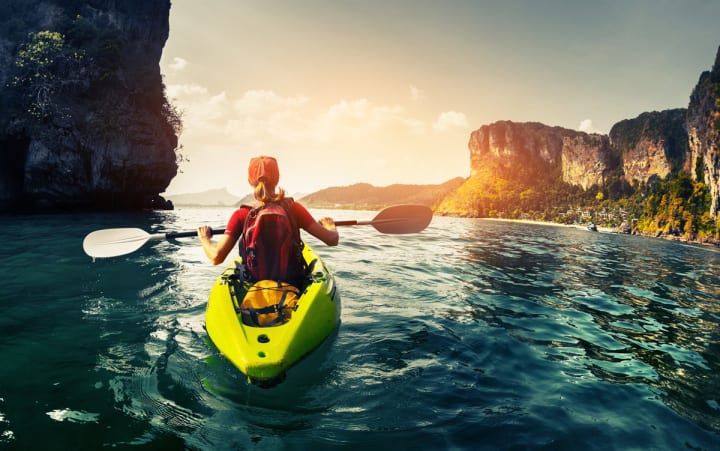
Testing the water
Fundamentally, at a basic learning level, the simple rocking motion of the kayak to test balance and objective affiliation may augment feelings of distress. Although the participant is learning to control the kayak, the surrounding environment is unpredictable and irrepressible.
However, the ability to shift cognitive paradigms (Argyris and Schön, 1996) and remain composed inevitably facilitates performance paramount for the task outcome. Dowd (2015) insists that although instructional kayaking ensures risk is only perceived; the diverse context, in which the kayaker is situated in, highlights the importance of remaining calm for the overarching safety aspect of the pursuit. This therefore develops the adoptability of rational thinking in adverse situations.
Even in the result of possible capsizing, therefore being momentarily dispersed from the controllable context, theorists such as Gregory and Kaufeldt (2015) suggest ability to persevere and minimalise fear of dejection within the open environment, capitalises on the value of patience through the development of a growth mindset (Dweck, 2006) to channel emotions positively.
Developing this mental strength through EI and facilitating a growth mindset, puts the Kayaker in a controllable situation, where Sturmey (2007) implies “the belief that effort leads to success is the most adaptive belief for sustaining persistence.”
Therefore, it could be argued that being put into a situation which forces uncomfortable emotions to surface, being aware of these emotions and controlling these emotions, inevitably develops a mental strength tougher than what once was in a predictable emotional comfort zone.
Implicit Learning Environments: Harnessing Emotions Positively Through the Task Itself
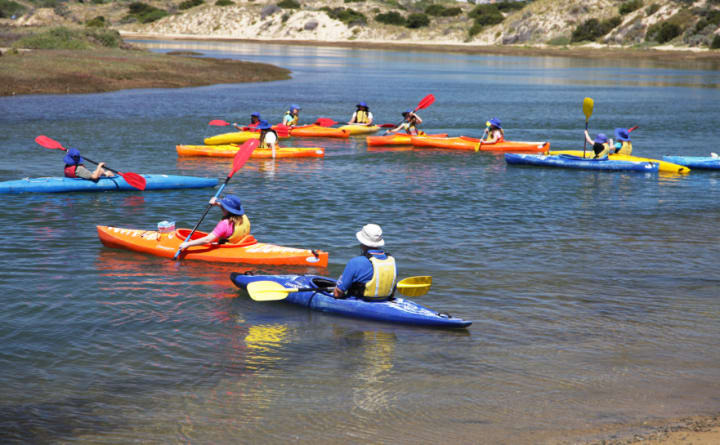
Implicit learning environments help to develop water confidence
Not only does the open water heighten emotional awareness and uncertain outcomes; closed instructional environments play a vital role in developing EI.
Fun, edgy and alternative pedagogical approaches to Kayaking offers the potential to develop implicit learning environments based around water-confidence. Implicit learning has been known to hold stronger credentials than conscious learning (Yang, 2012). Without even knowing it, you could be developing a sense of mental toughness stronger than you first thought possible.
For instance, an activity in which the pupil must sustain balance whilst edging towards the tip of the kayak and touching the water, not only subliminally develops water-confidence and self-efficacy, but further implies the ability to utilise emotions through a task-focus rationale develops positive experiences and facilitates an intrapersonal environment adaptable to diverse situations.
Therefore, where kayaking is an environmentally open pursuit in the adventurous outdoors, this facilitates the development of autonomous judgement pertinent to route discovery. Developing EI through the subconscious mind augments kayaking as a safe, lifelong pursuit.
Being Aware of Others’ Comfort Zones: Empathetic Appreciation

Social experiences develop altruistic understanding
By understanding experiences and the emotions embedded within them, this facilitates an empathetic appreciation of how others create meaning.
Kayaking, as you will now be aware, is a dangerous pursuit if not taken seriously. However, emotionally intelligent people can be proactive if there is any hint of danger. Oliner et al. (1992) insist “the deeper one’s understanding of the needs of others, the greater one’s ability to be responsive to those needs.” Although kayaking is predominantly an independent pursuit amid sit-in kayaks, Geiger (2000) suggests fundamental practices concerning new participants involve whole-group cohesion, therefore the ultimate learning process significantly depends on social unity (Laker, 2000).
However, where increased levels of fear instinctively increases levels of altruism, activities that combine physical prowess and environmental appreciation mediated through elements of safety insist attentiveness to emotional awareness and impulse control through the cultivation of mastery-orientation.
Emotional Intelligence: Developing a Kayaker's Mental Strength
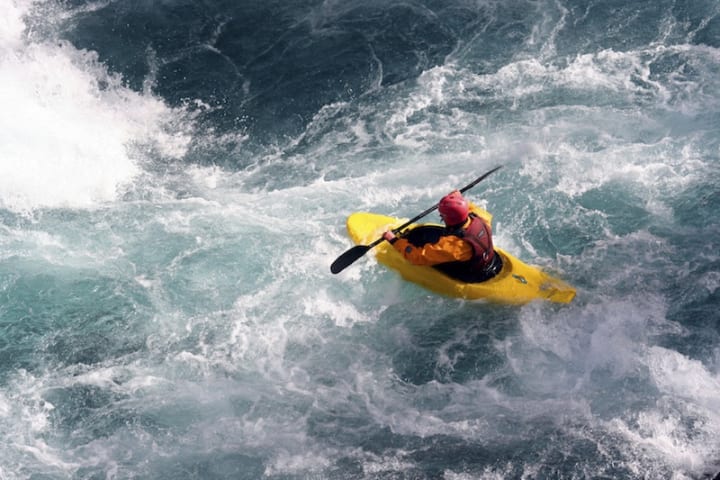
Delving outside of your comfort zone enhances mental toughness
So, there we have it. Emotional Intelligence is effectively identifying, understanding and regulating the emotions in yourself and in others.
With kayaking being an addiction to the adrenaline junkies or a pursuit challenging character development, there is no question in whether it builds mental strength. As an adventurous activity, it offers the potential for transformative learning (Kegan, 2009), where the ability to reconstruct one’s frame of mind by changing the epistemological concept towards the emotions felt within an experience, develops abstract thinkers and enhances the notion of self-control, persistence and zeal.
As a result, Steffen and Grosse (2003) insist kayaking is one of the fastest growing outdoor pursuits, especially for young people.
About the Creator
A D
☀






Comments
There are no comments for this story
Be the first to respond and start the conversation.